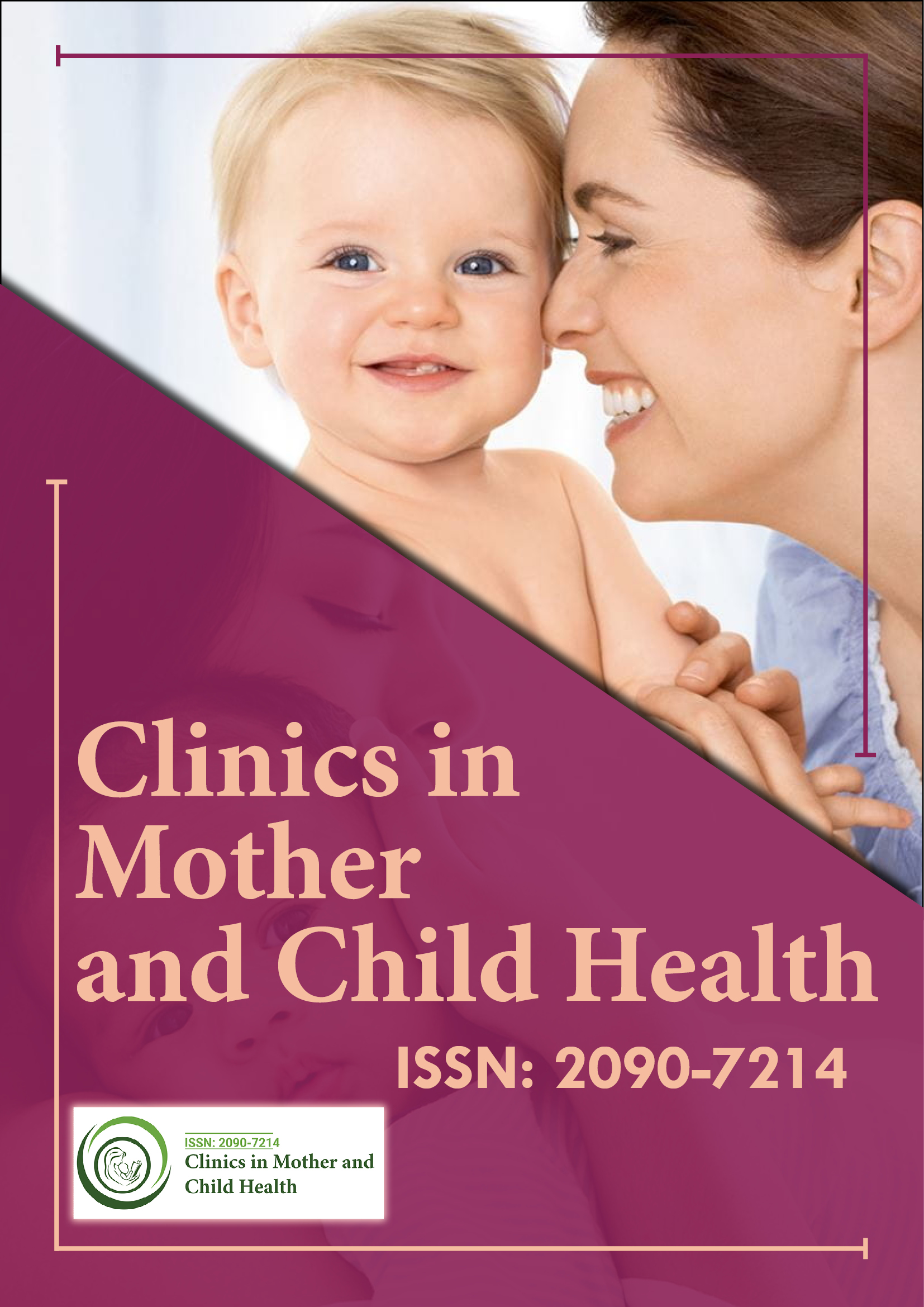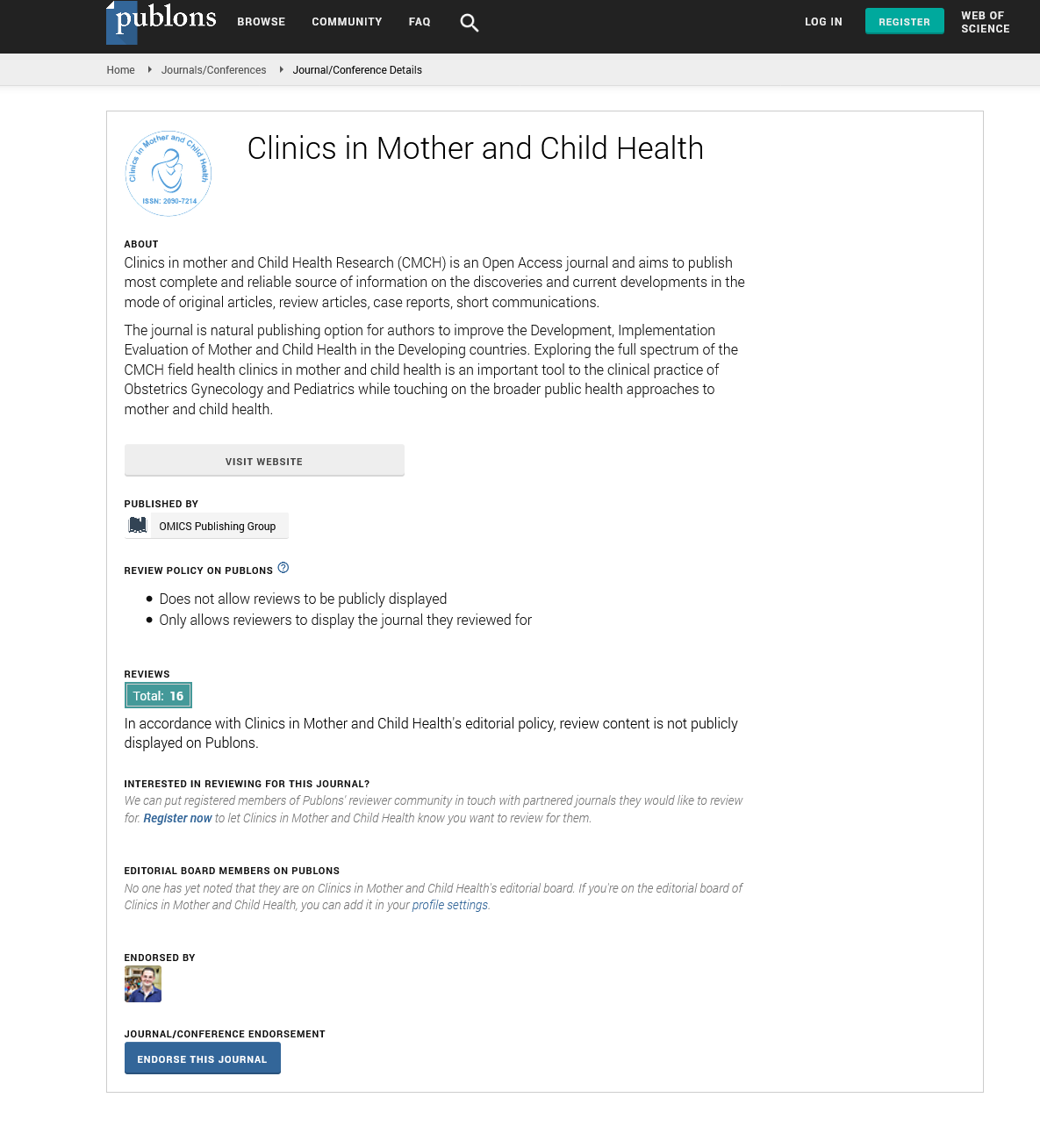Indexed In
- Genamics JournalSeek
- RefSeek
- Hamdard University
- EBSCO A-Z
- Publons
- Geneva Foundation for Medical Education and Research
- Euro Pub
- Google Scholar
Useful Links
Share This Page
Journal Flyer

Open Access Journals
- Agri and Aquaculture
- Biochemistry
- Bioinformatics & Systems Biology
- Business & Management
- Chemistry
- Clinical Sciences
- Engineering
- Food & Nutrition
- General Science
- Genetics & Molecular Biology
- Immunology & Microbiology
- Medical Sciences
- Neuroscience & Psychology
- Nursing & Health Care
- Pharmaceutical Sciences
Short Communication - (2025) Volume 22, Issue 7
Refugee Camps and Maternal Child Clinics in Jordan
Ahmed al Khalid*Received: 01-Jul-2025, Manuscript No. CMCH-25-300100; Editor assigned: 03-Jul-2025, Pre QC No. CMCH-25-300100; Reviewed: 16-Jul-2025, QC No. CMCH-25-300100; Revised: 21-Jul-2025, Manuscript No. CMCH-25-300100; Published: 28-Jul-2025, DOI: 10.35248/2090-7214.25.22.537
Description
In refugee camps hosting displaced families from Syria, Iraq and other conflict-affected regions, maternal and child health clinics provide a critical lifeline for women and children enduring the trauma of war and forced migration. These clinics aim to restore basic health services in environments marked by instability, overcrowding and resource limitations [1]. Expectant mothers routinely attend prenatal check-ups where screenings for anemia, gestational diabetes and high blood pressure are conducted. Tetanus immunizations are provided and health workers counsel women on nutrition and pregnancy care. Following childbirth, mothers are given postnatal support, including physical recovery checks, breastfeeding guidance and mental health observation when possible. Infants receive vaccinations, are monitored for infections and undergo regular growth assessments to detect malnutrition or developmental delays early [2].
Living conditions in camps often composed of tents or hastily built shelters pose significant challenges for maternal care. Privacy during medical examinations is limited due to shared spaces and thin barriers. Access to clean water and sanitation is inconsistent; women may have to walk long distances to reach washrooms or fetch water. These environmental limitations increase risks of infection and dehydration, particularly for pregnant women and infants [3]. Clinics are typically located inside camps or operate as mobile units that rotate between camp sectors. Their presence is essential, but their operations are vulnerable to disruptions. Funding shortages, changing security conditions, or border closures can lead to supply delays. In some cases, clinics run out of critical items such as vaccines, antibiotics, clean delivery kits, or infant formula. This unpredictability can weaken community trust in the system and discourage care-seeking [4].
Language and cultural diversity within camps also affect healthcare utilization. Refugees from different ethnic, tribal, or religious backgrounds may hold varying beliefs about childbirth, infant care, or women's health. Some women fear stigma if referred to external hospitals or may be reluctant to seek help due to gender norms [5]. Others may worry about hidden costs despite services often being free. To bridge these gaps, foreign NGOs partner with local organizations and community leaders to promote understanding and trust. Refugee camp health workers often trained peers from the same communities are instrumental in explaining danger signs in pregnancy, importance of immunizations and correct breastfeeding practices in familiar dialects [6]. Mental health is another pressing yet under-addressed issue in camp settings. Many women have endured the trauma of war, the loss of family members, or sexual violence. These experiences can lead to postpartum depression, anxiety disorders, or difficulty bonding with newborns. However, due to resource constraints, clinics rarely have dedicated mental health professionals. In response, some programs have initiated group counselling, peer support sessions, or safe spaces for women to share experiences and find solidarity. These services, though modest, can be life-changing for mothers grappling with emotional burdens [7].
Flexibility in service delivery significantly enhances access. Clinics that adjust operating hours based on camp routines opening early or extending hours into the evening accommodate women with domestic or informal work responsibilities. Avoiding hours of peak heat or cold makes it easier for mothers with young children to attend. In camps spread over large areas, mobile health units and outreach teams are indispensable. They visit shelter clusters, check on pregnant women and newborns and follow up on missed appointments, ensuring no one is left behind due to distance or mobility issues. Nutrition support is another essential service [8]. Clinics often distribute fortified supplements to pregnant and lactating women, monitor child nutrition and offer therapeutic feeding for undernourished children. In some camps, nutrition corners demonstrate how to prepare low-cost, nutritious meals with available rations, empowering mothers with practical knowledge. When services are stable and well-coordinated, the improvements are noticeable: infant mortality decreases, more births occur under medical supervision, vaccination rates rise and episodes of child illness decline. Early detection of complications means fewer emergencies during delivery and better growth outcomes for infants [9].
Sustaining these results requires joint action. Collaboration between humanitarian agencies, host country health ministries, donors and refugee communities is key. Investing in consistent supplies, respectful and trained staff, clean and safe clinic spaces and meaningful community engagement strengthens trust and uptake. Involving women in decisions about clinic operations such as hours, service types and staff composition also improves responsiveness and utilization. Ultimately, maternal and child health services in refugee camps do more than deliver medical care. They offer dignity, hope and a sense of stability to families whose lives have been torn apart. Clinics that adapt to local realities, respect cultural differences and commit to long-term continuity can make a lasting difference in the health and wellbeing of displaced women and children [10].
References
- Qian J, Chen Q, Ward SM, Duan E, Zhang Y. Impacts of caffeine during pregnancy. Trends in Endocrinol Metab. 2020;31(3):218-227.
- Saraiva SM, Jacinto TA, Gonçalves AC, Gaspar D, Silva LR. Overview of caffeine effects on human health and emerging delivery strategies. Pharm. 2023;16(8):1067.
- Purdue-Smithe AC, Kim K, Schliep KC, DeVilbiss EA, Hinkle SN, Ye A, et al. Preconception caffeine metabolites, caffeinated beverage intake, and fecund ability. Am J Clin Nutr. 2022;115(4):1227-1236.
- Marshall NE, Abrams B, Barbour LA, Catalano P, Christian P, Friedman JE et al. The importance of nutrition in pregnancy and lactation: Lifelong consequences. Am J Obstet Gynecol. 2022;226(5):607-632.
- Mousa A, Naqash A, Lim S. Macronutrient and micronutrient intake during pregnancy: An overview of recent evidence. Nutr. 2019;11(2):443.
- Chen G, Zhang Q, Ai C, Huang S, Zhang H, Guo X, et al. Serum metabolic profile characteristics of offspring rats before and after birth caused by prenatal caffeine exposure. Toxicol. 2019;427:152302.
- Xiao H, Wu Z, Li B, Shangguan Y, Stoltz JF, Magdalou J, et al. The lowâ?expression programming of 11βâ?HSD2 mediates osteoporosis susceptibility induced by prenatal caffeine exposure in male offspring rats. Br J Pharmacol. 2020;177(20):4683-4700.
- Pei LG, Zhang Q, Yuan C, Liu M, Zou YF, Lv F, et al. The GC-IGF1 axis-mediated testicular dysplasia caused by prenatal caffeine exposure. J Endocrinol. 2019;242(1):17-32.
- Gwon LW, Park SG, Lin C, Lee BJ, Nam SY. The effects of caffeine and bisphenol A singularly or in combination on cultured mouse embryos and yolk sac placenta. Reprod. Toxicol. 2020;91:92-100.
- Moon JH, Jang HC. Gestational diabetes mellitus: Diagnostic approaches and maternal-offspring complications. Diabetes Metab J. 2022;46(1):3-14.
Citation: Khalid A (2025). Refugee Camps and Maternal Child Clinics in Jordan. 22:537.
Copyright: © 2025 Khalid A. This is an open-access article distributed under the terms of the Creative Commons Attribution License, which permits unrestricted use, distribution and reproduction in any medium, provided the original author and source are credited.

